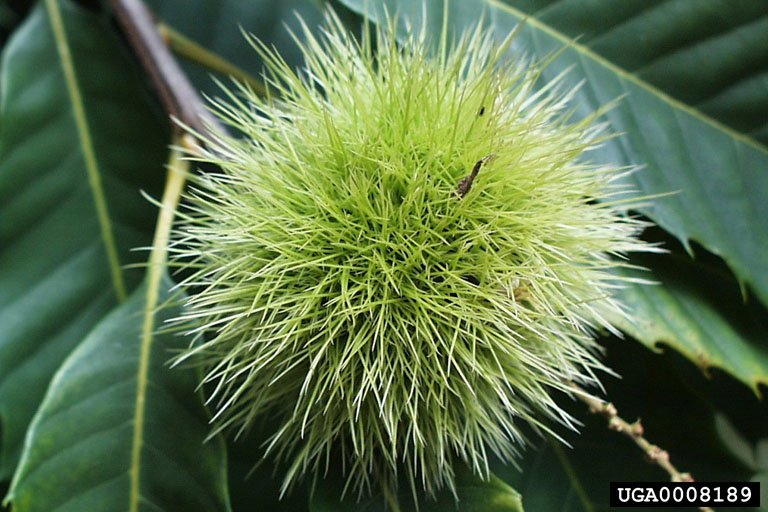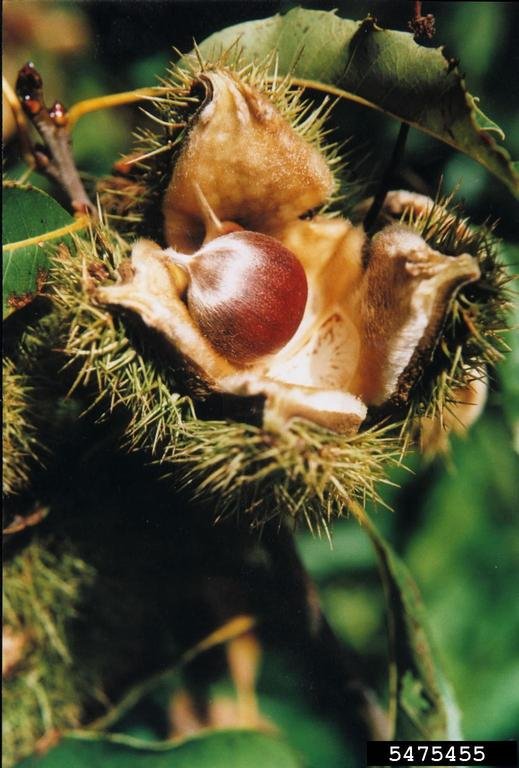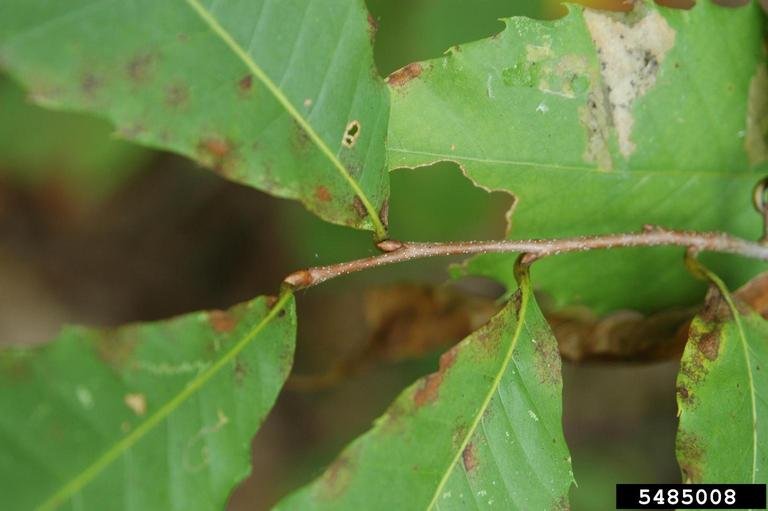American Chestnut (Castanea Dentata)
Alternative Names
Latin (scientific) name: Castanea dentata
Common English name: American chestnut
French name: Châtaignier d’Amérique
Other Information
Tree Type: Deciduous; Edible Fruit/Nut Tree
Habitat: Exists on well-drained, acidic sites with other broadleaf trees.
Hardiness Zones: 4a, 4b, 5a, 5b, 6a, 6b, 7a, 7b, 8a, 8b
Description
The American Chestnut was a very popular tree in Southern Ontario until the blight disease. It is now considered to be a very rare tree. Prior to the disease, the tree grew up to 35 meters tall; however, most trees since have only grown to about 10 meters tall.
Leaves are yellow-green, smooth and oblong, and are 15-28 cm long. It has straight veins and end in bristle-tipped teeth.
Its large, brown chestnuts are green with a prickly husk. They mature in Autumn.
Young bark is dark brown and smooth, while mature bark has broad ridges.
Its twigs are shiny red-brown with green-grown, hairless buds.
Sources: Tree Canada and Tree Bee







